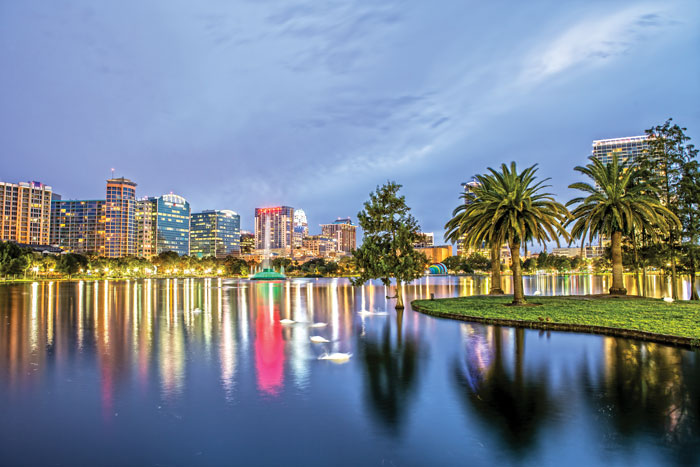
Orlando’s compact but lively downtown is highlighted by its iconic fountain on Lake Eola in the city’s signature park.
GRAND TOUR
New homeowners in Central Florida will find much more here than Mickey Mouse. To be sure, Walt Disney World and the other major theme parks garner their fair share of attention — but they can’t hold a candle to the multitude of choices for outdoor recreation, the mild weather and the rich diversity of culture found throughout the region.
Six counties make up Central Florida — Lake, Orange, Osceola, Polk, Seminole and Volusia. While each county and its cities provide their residents with specific amenities and character, they all share the lifestyle qualities that have long attracted newcomers to Florida.
Here are short profiles of each county, along with highlights and items of interest from some of their cities.
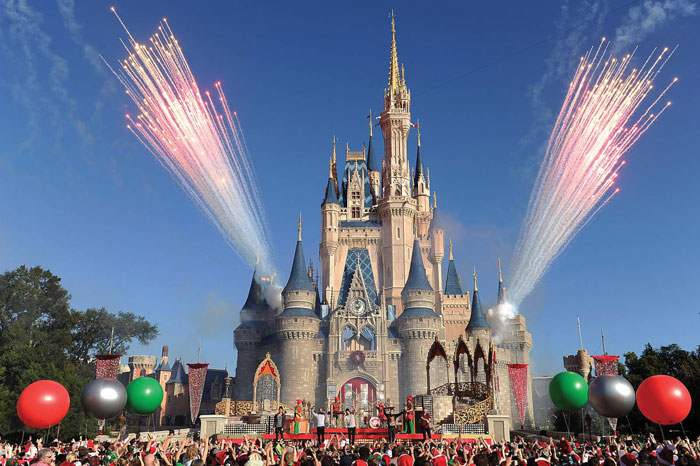
ORANGE COUNTY (ORANGECOUNTYFL.NET)
Population estimate: 1,380,645
Increase since 2010: 20.5%
Residents under age 18: 22.2%
Residents over 65: 11.9%
Housing units: 544,417
Residents with bachelor’s degree or higher: 33.8%
Mean travel time to work: 27.8 minutes
Median household income: $54,335
The center of Central Florida, Orange County has a lot going for its residents. From professional sports to arts and culture and family-friendly tourism, the county serves as the hub of business and residential growth of the Metro Orlando area.
For residents relocating from outside Florida or from another part of the state, Orange County, its 10 municipalities and smaller communities offer a big range for newcomers to consider — either to retire or work or raise a family.
Living close to well-known institutions of higher learning, including the University of Central Florida (Go Knights!), Rollins College and Valencia College, high school graduates and adult students have premier educational choices at their fingertips.
Two major healthcare providers — AdventHealth and Orlando Health — operate facilities throughout Central Florida. And there are seemingly countless public parks for outdoor recreation, including Wekiwa Springs State Park near Apopka.
Of course, visitors and residents alike flock to the long list of attractions, including Walt Disney World, Universal Studios, Sea World and more.
Municipalities include:
APOPKA
Population estimate: 53,489
Increase since 2010: 26.9%
Residents under age 18: 24.8%
Residents over 65: 12.7%
Residents with bachelor’s degree or higher: 27.4%
Mean travel time to work: 30.6 minutes
Median household income: $61,558
The county’s second-largest city after Orlando, Apopka’s population continues to explode. And that’s just within the expanding city limits in the county’s northwest sector. Several major projects contribute to that growth. A new hospital — AdventHealth Apopka — opened in the southern part of the city, replacing an existing facility downtown. On the north side, residential and commercial development will follow the completion of the Wekiva Parkway, a toll road that will connect Apopka to I-4 in Sanford to the east and Mount Dora to the west. Apopka also has begun work on its City Center at the intersection of U.S. Highway 441 and S.R. 436. Plans call for it to include residential areas, along with shopping and entertainment.
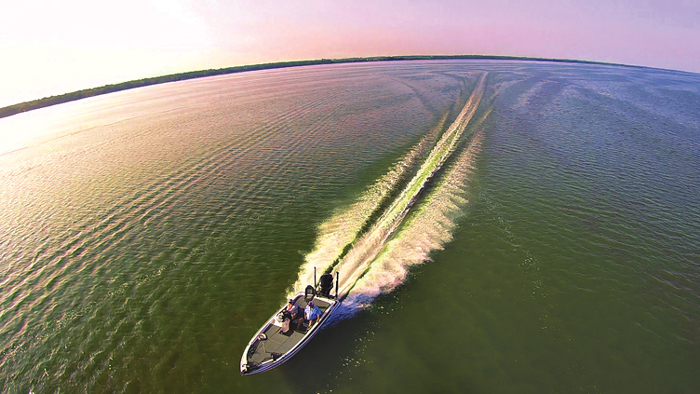
EATONVILLE
Population estimate: 2,301
Increase since 2010: 5.7%
Residents under age 18: 20%
Residents over 65: 14%
Residents with bachelor’s degree or higher: 5.2%
Mean travel time to work: 29.8 minutes
Median household income: $27,663
Founded in 1887, the town was one of the first all-black municipalities in the United States. Noted writer and folklorist Zora Neale Hurston, who was raised here, mentions Eatonville in many of her stories, including Their Eyes Were Watching God. The Zora Neale Hurston Museum of Fine Arts opened in the 1990s, and each year the town stages the Zora! Festival to honor her and the town’s heritage.
MAITLAND
Population estimate: 17,947
Increase since 2010: 13.1%
Residents under age 18: 20.2%
Residents over 65: 14.6%
Residents with bachelor’s degree or higher: 57.5%
Mean travel time to work: 23.2 minutes
Median household income: $74,199
Bisected by both I-4 and U.S. Highway 17-92, the city sits at the north Orange-south Seminole county line. Its residents and visitors have many water recreation choices on lakes Maitland, Minnehaha and Sybelia, among others. The annual Maitland Art Festival sets up on the banks of Lake Lily. The city also is home to the Maitland Art Center, a designated National Historic Landmark; the Jewish Community Center of Greater Orlando; the Holocaust Memorial Resource and Education Center of Florida; and the Enzian Theater, an independent movie house.
ORLANDO
Population estimate: 285,713
Increase since 2010: 19.6%
Residents under age 18: 20.9%
Residents over 65: 10.2%
Housing units: NA
Residents with bachelor’s degree or higher: 36.7%
Mean travel time to work: 25.8 minutes
Median household income: $48,511
The county seat is also a major metropolitan city with notable neighborhoods such as College Park, MetroWest, Lake Nona and Baldwin Park. Orlando International Airport is one of the busiest in the country, and lovers of sports have the Orlando Magic NBA team, the Orlando City and Orlando Pride soccer clubs, the Orlando Solar Bears hockey team and Camping World Stadium, home to college football’s Citrus Bowl, Russell Athletic Bowl and Cure Bowl. Lake Nona’s Medical City is a 650-acre health and life sciences park that includes the University of Central Florida’s Health Sciences Campus, Nemours Children’s Hospital, the University of Florida Academic and Research Center, and the Orlando Veterans Administration Medical Center. Performance venues include the Dr. Phillips Center for the Performing Arts, the Amway Center and the Bob Carr Theater.
WINTER GARDEN
Population estimate: 45,266
Increase since 2010: 30.2%
Residents under age 18: 24.2%
Residents over 65: 12.5%
Residents with bachelor’s degree or higher: 42%
Mean travel time to work: 28.3 minutes
Median household income: $64,683
Located on the south side of Lake Apopka and a short distance west of Orlando, the former citrus town is a popular destination for both residents and visitors. The West Orange Trail, popular with bicyclists and hikers, runs through a historic downtown area that’s filled with shops, restaurants and a Farmers’ Market on Saturdays. The district includes the Garden Theatre, which first opened in 1935 and was the first movie house in Central Florida built for “talkies.” Restored, the theater reopened in 2008 and today hosts more than 450 events each season, including plays, concerts and movies.
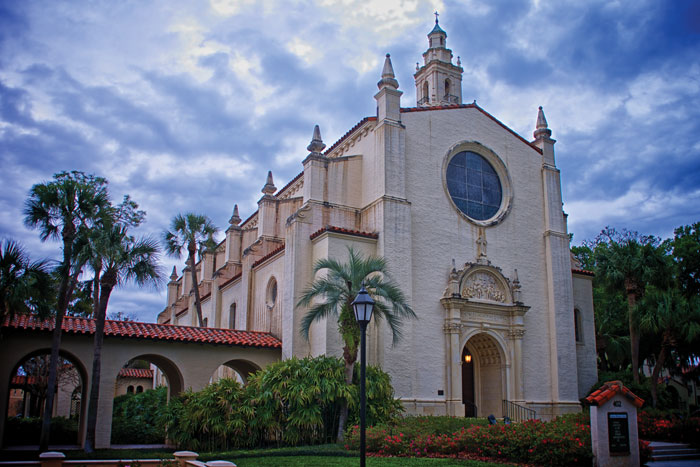
WINTER PARK
Population estimate: 31,059
Increase since 2010: 12.1%
Residents under age 18: 18.4%
Residents over 65: 21.2%
Residents with bachelor’s degree or higher: 62.3%
Mean travel time to work: 23.7 minutes
Median household income: $71,749
Perhaps the gem of Central Florida cities, Winter Park has a longstanding reputation as an upscale enclave of art and culture, elegant homes, fine dining and beautiful homes. The city is home to Rollins College and Full Sail University as well as must-see museums such as the Albin Polasek Museum and Sculpture Gardens and the Charles Hosmer Morse Museum of American Art, which houses the world’s most comprehensive collection of works by Louis Comfort Tiffany. Housed at Rollins College, the Bach Festival Society of Winter Park presents performances by the Bach Festival Choir and Orchestra. The Scenic Boat Tour takes passengers on a relaxing ride through the Winter Park Chain of Lakes, while Park Avenue offers shoppers and diners plenty of high-end choices. It runs alongside Central Park, site of the annual Winter Park Sidewalk Art Festival.
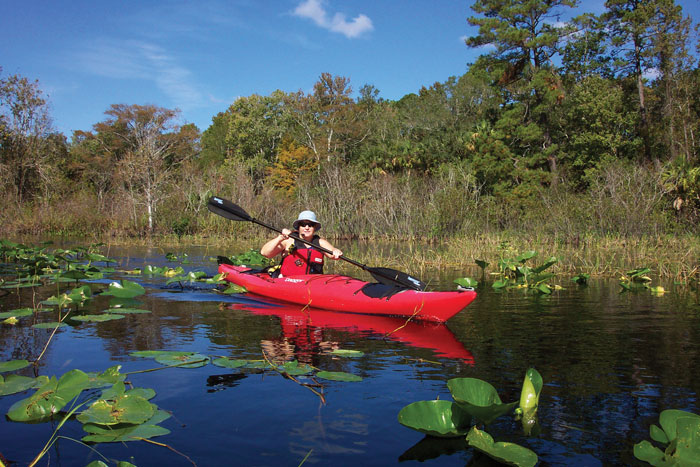
LAKE COUNTY (LAKECOUNTYFL.GOV)
Population estimate: 356,495
Increase since 2010: 20%
Residents under age 18: 19.1%
Residents over 65: 26.7%
Housing units: 160,467
Residents with bachelor’s degree or higher: 22.7%
Mean travel time to work: 29.4 minutes
Median household income: $51,884
Like much of the rest of Central Florida, Lake County has grown rapidly in recent years. That’s not likely to slow anytime soon as more homebuyers and developers extend their march north and west out of Orange County.
Forecasts predict Lake County’s population to grow to more than 427,000 by 2030 and more than 484,000 by 2040. Planners cite two locations where much of the growth will occur: The southern areas of Clermont, Groveland and Minneola; and the northeast area east of Mount Dora.
Named for the abundance of lakes within its borders, the county reaches south to Polk and Osceola counties, while the northeast section touches Volusia County. Florida’s Turnpike provides easy access south to Orlando and I-4 and north to I-75.
Nature lovers find plenty of open spaces, including the Lake Woodruff National Wildlife Refuge, the Ocala National Forest and Lake Louisa and Lake Griffin state parks. Those are in addition to many city and county parks.
With 14 municipalities and more than 20 smaller communities, Lake offers plenty of choices for folks who relocate — whether it’s from another state or another part of Central Florida.
New residents will find a bounty of cultural and recreational opportunities, along with new developments and historic downtowns.
Municipalities include:
CLERMONT
Population estimate: 36,693
Increase since 2010: 27.4%
Residents under age 18: 21.1%
Residents over 65: 23.9%
Residents with bachelor’s degree or higher: 32.4%
Mean travel time to work: 30.7 minutes
Median household income: $58,804
The city’s current population is expected to climb to more than 54,000 in the next decade. Part of that growth is driven by the Wellness Way area, a 16,000-acre mixed-use project south of the city that will have about 16,000 homes and 12 million square feet of nonresidential uses. Wellness Way also will be home to Olympus, a 243-acre master-planned community combining sports, wellness, entertainment and residential development. In somewhat less-healthy perks, Clermont hosts the annual Pig on the Pond community festival, which features barbecue, live entertainment and carnival rides.
LEESBURG
Population estimate: 23,163
Increase since 2010: 13.7%
Residents under age 18: 26.1%
Residents over 65: 23.9%
Residents with bachelor’s degree or higher: 16.3%
Mean travel time to work: 25.1 minutes
Median household income: $36,191
Lake County’s oldest city lies along U.S. Highway 441 and is sandwiched between lakes Harris and Griffin. It’s home of Lake-Sumter State College and the annual Leesburg Bike Fest, which attracts thousands of festivalgoers for music, entertainment — and motorcycles.
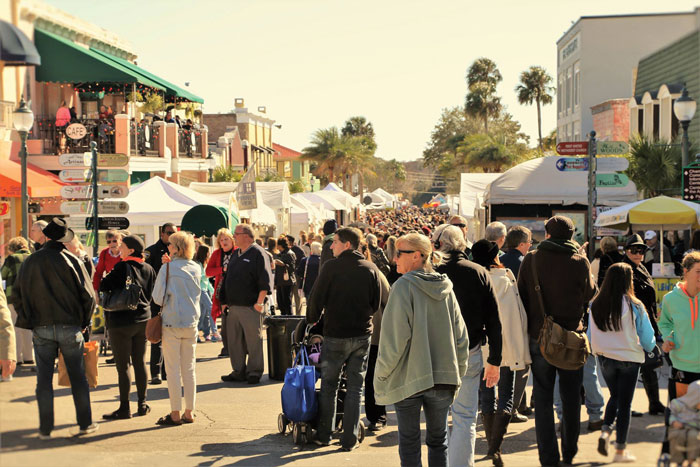
MOUNT DORA
Population estimate: 14,216
Increase since 2010: 17%
Residents under age 18: 16%
Residents over 65: 33.8%
Residents with bachelor’s degree or higher: 30.1%
Mean travel time to work: 27.5 minutes
Median household income: $49,394
Mount Dora may be the most famous city in Lake County because of national publicity. For example, Southern Living magazine in a 2016 story on “Small Towns We Love” called it one of “five great little communities that are well worth a visit — or perhaps even a move.” The picturesque city hosts several large festivals throughout the year, including the annual Mount Dora Arts Festival. Growth is heading to the eastern edge thanks to the Wekiva Parkway (S.R. 429), which will connect Mount Dora to I-4 in Sanford and complete the beltway around metro Orlando by 2022.
TAVARES
Population estimate: 17,472
Increase since 2010: 25%
Residents under age 18: 17.4%
Residents over 65: 32.7%
Residents with bachelor’s degree or higher: 19.3%
Mean travel time to work: 25 minutes
Median household income: $43,744
The laid-back county seat may see 10,000 more residents in the next decade. The Tavares Seaplane Base & Marina is a seaplane airport and recreational boating marina located on the Lake Dora waterfront in Wooton Park. Visitors can take seaplane rides and learn to fly.
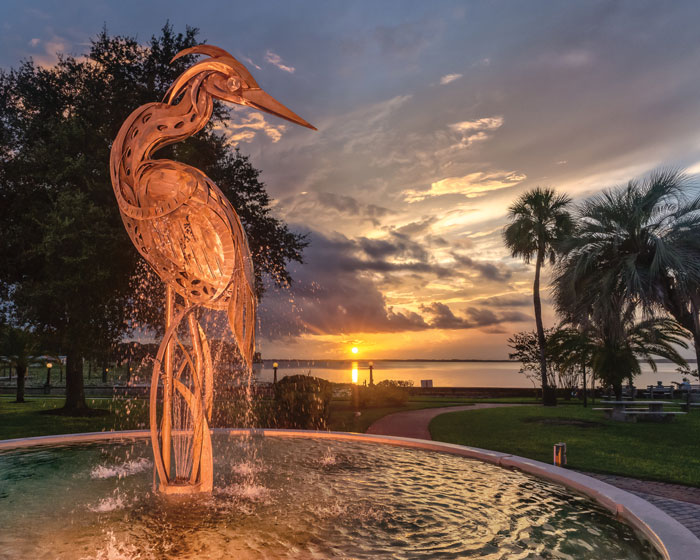
EUSTIS
Population estimate: 21,083
Increase since 2010: 14.2%
Residents under age 18: 21.1%
Residents over 65: 22.2%
Residents with bachelor’s degree or higher: 19.4%
Mean travel time to work: 24.7%
Median household income: $43,901
Along with Tavares and Mount Dora, Eustis marks the third point of Lake County’s so-called Golden Triangle. Sitting on the east side of Lake Eustis, the city offers residents a pleasant lakefront walk through Ferran Park, the Bay Street Players community theater and the George Washington Birthday Festival and Parade — which is the second longest ongoing annual event held in honor of the first president of the United States.

OSCEOLA COUNTY (OSCEOLA.ORG)
Population estimate: 367,990
Increase since 2010: 37%
Residents under age 18: 24.4%
Residents over 65: 13.2%
Housing units: 153,495
Residents with bachelor’s degree or higher: 20.5%
Mean travel time to work: 32.8 minutes
Median household income: $50,063
Osceola County may be the ideal place for newcomers to Central Florida who want to live near “Old Florida” but still have access to the urban lifestyle of Orlando.
Covering more than 1,500 square miles (compared to Seminole County’s 300 square miles), Osceola County stretches more than 60 miles from the Orange County line south to Okeechobee County.
In between are the county’s two cities, a handful of unincorporated communities and plenty of nature in the form of ranch lands and undeveloped prairie, woods and marsh.
By far, most of the county’s residents live in the northwest bordering Orange and Polk counties. That puts them within a half-hour drive of Walt Disney World and other area attractions. It’s no surprise that Disney is the county’s second-largest employer, just behind the county school system.
Away from the congestion and tourist shops, there are many state wildlife management areas, lakes and preserves. The county also hosts the headwaters of the Lake Okeechobee-Florida Everglades ecosystem. Lake Tohopekaliga, Florida’s the sixth-largest lake at 19,000 acres, sits next to Kissimmee.
Municipalities include:
KISSIMMEE
Population estimate: 73,597
Increase since 2010: 23.5%
Residents under age 18: 24.2%
Residents over 65: 10.7%
Residents with bachelor’s degree or higher: 17%
Mean travel time to work: 29.5 minutes
Median household income: $39,841
The county seat’s proximity to major theme parks encouraged many smaller attractions, such as Old Town and Fun Spot, to spring up near U.S. Highway 192, which runs through the heart of the city. Paying tribute to the county’s cowboy roots, Kissimmee also hosts the annual Silver Spurs Rodeo. The city’s Waterfront Park on Lake Tohopekaliga features walking paths, playgrounds and a fishing pier.
ST. CLOUD
Population estimate: 54,115
Increase since 2010: 43.1%
Residents under age 18: 26.8%
Residents over 65: 13.5%
Residents with bachelor’s degree or higher: 17.7%
Mean travel time to work: 34.1 minutes
Median household income: $54,979
Located just a few miles east of Kissimmee and about an hour from the beaches in Melbourne, St. Cloud was founded in the early 1900s as a retirement community for Civil War Union veterans who paid $50 for five-acre lots. It’s located on the southern shore of East Lake Tohopekaliga, approximately 26 miles southeast of Orlando.
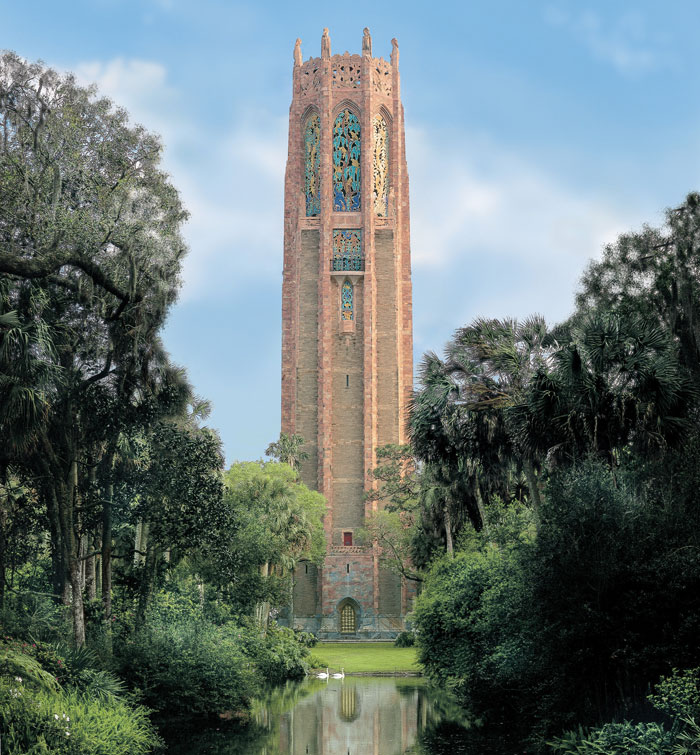
POLK COUNTY (POLK-COUNTY.NET)
Population estimate: 708,009
Increase since 2010: 17.6%
Residents under age 18: 22.1%
Residents over 65: 20.2%
Housing units: 299,421
Residents with bachelor’s degree or higher: 20%
Mean travel time to work: 26.8 minutes
Median household income: $48,500
Located along I-4 midway between Orlando and Tampa, Polk County benefits from its proximity to both high-growth urban areas. It lies along the so-called “I-4 Corridor” that connects the state’s west and east coasts.
County leaders say citrus, cattle, agriculture and the phosphate industry remain key players in the local economy. But tourist revenue has increased in recent years, thanks in part to attractions such as Legoland Florida and historic Bok Tower Gardens.
The county also was the site of a couple of historic firsts: The first Publix Supermarket was built in Winter Haven. That city also was the location of Cypress Gardens (now Legoland), the first major tourist attraction in Florida.
Perhaps one of the fastest growing areas in Polk County is around the small city of Davenport. While the city’s population is less than 5,300, its location near the Osceola County line and near several major roadways has attracted a long list of builders and developers.
Municipalities, in addition to Davenport, include:
LAKELAND
Population estimate: 110,516
Increase since 2010: 13.6%
Residents under age 18: 19.7%
Residents over 65: 21.8%
Residents with bachelor’s degree or higher: 26.3%
Mean travel time to work: 21.6 minutes
Median household income: $44,313
The largest city in Polk County, Lakeland is 35 miles from Tampa and 56 miles from Orlando. It’s home to several institutions of higher learning, including Southeastern University, Florida Polytechnic University and Florida Southern College, the campus of which encompasses the largest on-site collection of Frank Lloyd Wright-designed buildings in the world. The MLB Detroit Tigers hold spring training in Lakeland.
WINTER HAVEN
Population estimate: 43,020
Increase since 2010: 24.5%
Residents under age 18: 22.1%
Residents over 65: 23.8%
Residents with bachelor’s degree or higher: 19%
Mean travel time to work: 25.3 minutes
Median household income: $44,397
The city lies just east of Lakeland and boasts 50 lakes, 22 boat ramps, 14 public docks and 30 waterfront parks. In 1936, Winter Haven welcomed Cypress Gardens, a botanical garden that was well known for its water ski shows and Southern Belles. Today it is the site of Legoland.
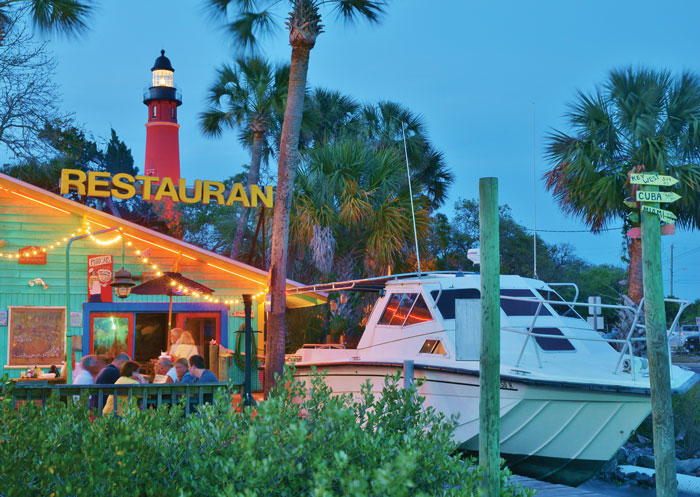
SEMINOLE COUNTY (SEMINOLECOUNTYFL.GOV)
Population estimate: 467,832
Increase since 2010: 10.7%
Residents under age 18: 21%
Residents over 65: 15.5%
Housing units: 192,246
Residents with bachelor’s degree or higher: 38.2%
Mean travel time to work: 27.2 minutes
Median household income: $63,760
Seminole County is among the fastest-growing counties in Florida. The county government and Seminole’s seven municipalities boast a wide variety of recreational opportunities, such as parks, trails, wilderness areas, libraries, museums and local attractions.
Seminole County sits between the major Central Florida theme parks and the Atlantic Coast. It’s an easy drive to visit Mickey Mouse or to get sand between your toes.
Named after the Seminole Indians, the county has evolved over the years from a rural and agricultural area. (Sanford long ago was known as the “Celery Capital of the World.”)
For a time, the growing county was a bedroom community for Orlando, but today many residents live and play — and work — in Seminole County.
Municipalities include:
ALTAMONTE SPRINGS
Population estimate: 44,241
Increase since 2010: 6.3%
Residents under age 18: 18.9%
Residents over 65: 14.8%
Residents with bachelor’s degree or higher: 38.1%
Mean travel time to work: 25.5 minutes
Median household income: $52,554
The city straddles I-4 and abuts Orange County to its south and west. An outdoor town center called “Uptown Altamonte” features retail and residential areas and is home to the annual July 4 celebration called “Red, Hot, and Boom.” Altamonte Springs is known for the presence of just about every franchise eatery and retail outlet in existence.
CASSELBERRY
Population estimate: 28,876
Increase since 2010: 10.6%
Residents under age 18: 17.8%
Residents over 65: 15.1%
Residents with bachelor’s degree or higher: 27.1%
Mean travel time to work: 25.4 minutes
Median household income: $46,172
The city lies just to the east of Altamonte Springs. Water recreation is popular in Casselberry, which has more than 30 lakes and waterways, including lakes Howell, Kathryn and Concord and the Triplet Chain of Lakes. The city’s main roadways are U.S. Highway 17-92 and Semoran Boulevard.
LAKE MARY
Population estimate: 17,283
Increase since 2010: 25.2%
Residents under age 18: 19.3%
Residents over 65: 21%
Residents with bachelor’s degree or higher: 49.7%
Mean travel time to work: 25.8 minutes
Median household income: $89,908
A few miles north along I-4 is Lake Mary, home to the county’s top private employer — the software company Convergys. In addition, several other of the county’s top employers are just next door in the Heathrow community. Those include Chase Bankcard Services and the American Automobile Association.
LONGWOOD
Population estimate: 15,124
Increase since 2010: 10.6%
Residents under age 18: 17.4%
Residents over 65: 19.1%
Residents with bachelor’s degree or higher: 27.4%
Mean travel time to work: 28.2 minutes
Median household income: $62,192
Longwood sits on the northern edges of Altamonte Springs and Casselberry. With its first settlers arriving in the 1870s, Longwood is proud of its heritage as shown by its Historic District, which covers about 190 acres with nearly 40 structures. Located near the intersection of S.R. 434 and C.R. 427, the district includes the Longwood Hotel, the Inside-Outside House and the Bradlee-McIntyre House.
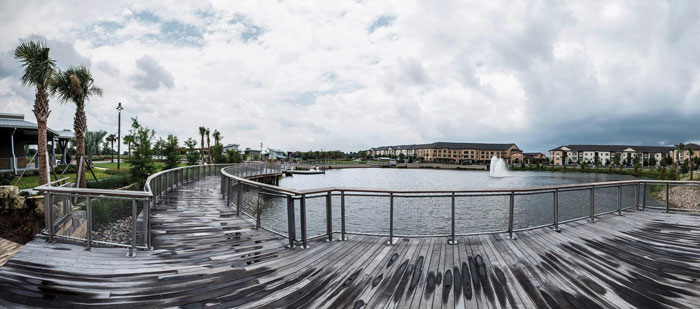
OVIEDO
Population estimate: 41,557
Increase since 2010: 24.2%
Residents under age 18: 25.6%
Residents over 65: 10.2%
Residents with bachelor’s degree or higher: 46%
Mean travel time to work: 29.6 minutes
Median household income: $90,482
Located in eastern Seminole County, the city’s population has exploded since the 1970s. Much of that growth can be attributed to its proximity to the University of Central Florida and its research park, which is just down the road in Orange County. Its town center, called “Oviedo on the Park,” features townhomes, apartments, restaurants and retail areas. Its focal point is man-made Center Lake Park, surrounded by a playground and amphitheater.
SANFORD
Population estimate: 60,035
Increase since 2010: 11.4%
Residents under age 18: 25.3%
Residents over 65: 12%
Residents with bachelor’s degree or higher: 23%
Mean travel time to work: 26.7 minutes
Median household income: $45,733
The county seat hugs the southern shore of Lake Monroe. Among places of interest in Sanford are Seminole State College, the Central Florida Zoo and Botanical Gardens, and the Orlando Sanford International Airport. Visitors and residents enjoy the city’s historic downtown and lakefront walking trail.
WINTER SPRINGS
Population estimate: 37,321
Increase since 2010: 12%
Residents under age 18: 19.1%
Residents over 65: 17.4%
Residents with bachelor’s degree or higher: 43%
Mean travel time to work: 29 minutes
Median household income: $70,417
Sandwiched between Casselberry and Lake Jesup, the city got its start through agriculture. Settlers used the wharves on the lake to carry their products across Lake Jesup to Lake Monroe and the St. Johns River. The city originally was called North Orlando and had about 600 residents. One of its highlights is the annual Scottish Highland Games.
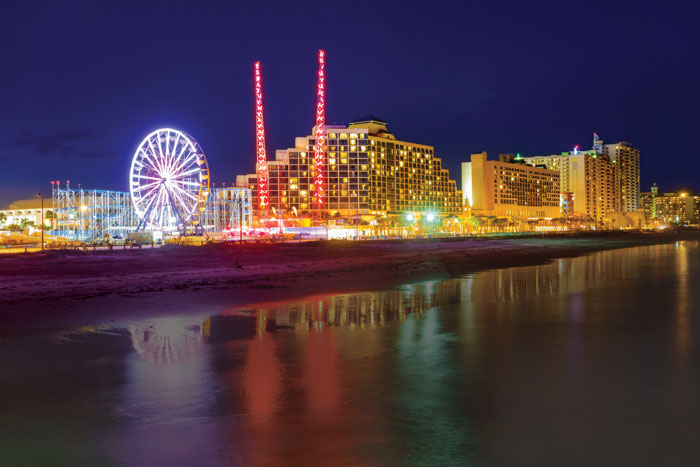
VOLUSIA COUNTY (VOLUSIA.ORG)
Population estimate: 547,538
Increase since 2010: 10.7%
Residents under age 18: 17.7%
Residents over 65: 24.4%
Housing units: 262,088
Residents with bachelor’s degree or higher: 23.6%
Mean travel time to work: 25.7 minutes
Median household income: $46,760
Volusia County likely marks off most must-haves on a relocation checklist: good schools, outdoor recreation, miles of clean beaches, historic communities and new homes. There’s even a town famous for its large number of psychics and mediums.
But it doesn’t take a fortune-teller to see growth in Volusia’s future. The Forbes 2017 List of Fastest Growing Cities in the country ranked the Deltona-Daytona Beach-Ormond Beach Metropolitan Statistical Area, which includes Flagler County to the north, as No. 4.
Volusia’s population is divided into east and west Volusia. The St. Johns River flows north along the western side, which includes the inland cities of DeLand and Deltona.
The Atlantic Ocean provides the border to the east, which includes the oceanfront cities of Daytona Beach and Port Orange. I-4 and I-95 offer easy routes to Orlando, Jacksonville, Tampa and Miami.
In addition to water sports along the beach and Intracoastal Waterway, the St. Johns River and lakes George, Monroe and Harney provide opportunities for boating, fishing and other water recreation. The SunRail commuter train makes its northernmost stop in DeBary.
Students have several choices for higher education: Daytona State College, the University of Central Florida, Bethune-Cookman University, Embry-Riddle Aeronautical University, Keiser College, Stetson University and Nova Southeastern University.
Municipalities include:
DELAND
Population estimate: 33,532
Increase since 2010: 24.7%
Residents under age 18: 18.3%
Residents over 65: 23.9%
Residents with bachelor’s degree or higher: 27.9%
Mean travel time to work: 22.9 minutes
Median household income: $42,500
The county seat is located between I-4 and the St. Johns River. Founded in 1876, the city boasts a downtown historic district with numerous 19th-century buildings. Nationally recognized Stetson University was founded in DeLand in 1883. Today, the school has an enrollment of more than 4,000. Skydive DeLand, a nationally known skydiving facility, is based here.
DELTONA
Population estimate: 91,951
Increase since 2010: 8%
Residents under age 18: 22.9%
Residents over 65: 15.7%
Residents with bachelor’s degree or higher: 16.3%
Mean travel time to work: 32.3 minutes
Median household income: $48,839
The most populated city in Volusia County, Deltona sits alongside I-4 and just to the north of Lake Monroe. Originally called Deltona Lakes, it started in 1962 as a planned residential community. It has remained mostly residential, serving as a bedroom community for nearby Orlando and Daytona Beach. For the city’s younger residents, there’s the Lake Butler Recreation Complex, which includes a skate park, a playground and basketball courts.
DAYTONA BEACH
Population estimate: 68,866
Increase since 2010: 11.8%
Residents under age 18: 16.6%
Residents over 65: 20.4%
Residents with bachelor’s degree or higher: 23.3%
Mean travel time to work: 19.5 minutes
Median household income: $32,932
It has long called itself “The World’s Most Famous Beach.” While that assertion may draw arguments from some, Daytona Beach does have plenty going for it. There are 23 miles of beaches as well as the Daytona Pier and Boardwalk. The city is home to the Daytona Beach International Airport, NASCAR, the Daytona International Speedway and the LPGA. It’s the site of Bethune-Cookman University, Daytona State College and Embry-Riddle Aeronautical University.
PORT ORANGE
Population estimate: 64,252
Increase since 2010: 13.5%
Residents under age 18: 17.7%
Residents over 65: 24%
Residents with bachelor’s degree or higher: 25.6%
Mean travel time to work: 22.2 minutes
Median household income: $50,418
Just a few miles south of Daytona Beach sits Port Orange. The city got its start after the Civil War, when Dr. John Milton Hawks, an abolitionist and United States Army surgeon, brought 500 freed slaves to the area. The history of their community, known as Freemanville, remains with the Mount Moriah Baptist Church, which was built in 1911, on Orange Avenue.
Statistics: U.S. Census Bureau, 2018
RELOCATION TIPS
• Stay organized. Much of moving-related stress comes from managing all the logistics, such as leaving your current home and finding a new one. Be organized. Keep to-do lists for both your departure and arrival locations.
• Know what’s available to you. Many companies offer a variety of relocation services and most are flexible in what they provide, such as home-hunting trips and assistance in selling or buying your home. Also, if your employer doesn’t typically offer relocation assistance, ask for it and negotiate.
• Take time to get to know your new environment before you move. Find the neighborhood that best suits your lifestyle. Talk to people who live there and follow the local news.
• Know the cost of living in the new city. There are significant differences in cost of living among U.S. cities. Do the research and plan accordingly.
• Don’t make any long-term commitments. Consider renting at first to avoid buying into a neighborhood you might end up not liking. You might not like the job, either. Some companies offer temporary corporate housing.
• Find out if any of your moving expenses are tax deductible. Even if your new employer doesn’t offer any financial assistance for your relocation, you might be eligible for partial reimbursement come tax time.
• Build a social support network. Use online services to find others in the area who have similar interests or hobbies. Your new company may also offer clubs and interest groups to meet new people.
- Source: Forbes Magazine
